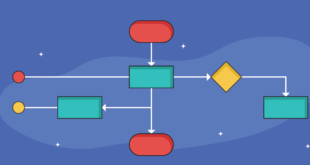Every business should have clear objectives and a timeline on when the results are expected. Besides, as a business manager, you need professionals who understand the operations within and without the business cycles to deal with the future challenges and prevent them from affecting the short term and long-term objectives.
One of the common strategies that businesses have embarked on is the OKRs to set protocol for teams, companies, and individuals in a business environment. The management methodology ensures that every stakeholder in the organization focuses on the necessary efforts required to address the important issues.
This guide will break down the standard practices, processes, and benefits of the OKRs you can use to improve your business.

What Are OKRs?
OKRs stand for Objectives and Key Results, a robust methodology that businesses use to set their goals and align performance with the results. The methodology has become critical for any business that wants to record rapid growth and high performance.
Simply, an OKR is a tool to help engage and align everyone in the company to specific, measurable goals.
With OKR, you have a methodology and a management goal-setting system that plays a significant role in helping everyone focus their efforts on essential priorities by allowing them to understand what matters for the organization. Notably, the methodology is a shared system that aligns everyone and increases performance, thus driving better results.
Since OKRs are made of objectives and Key Results, it is essential to break down the two for a better understanding.
Objectives- Objectives in OKRs represent a strategic theme that efforts a qualitative headline that the organization wants to achieve. Notably, the purpose states the main goals by naming the set or key results, making them qualitative.
One of the common aspects of objectives is that they might have a quarterly cadence or sequence with around three key results to determine the progress within that OKR.
Key Results- Key results are the determinants of the goal progress. In most cases, key results are assigned to individuals in the organization to examine performance and results in relation to the objective. Therefore, the individual is solely responsible for updating the KR.

The OKR Formula
John Doerr established the formula as a starting point to achieve an objection. The formula helps top executives in an organization decide on the best objectives and how they should be achieved. For that reason, it is important to maintain alignment, progress, and visibility on your OKRs to ensure there is a strategic alignment and accelerate delivery on drives results and goals.
How do OKRs help?
See examples here on how OKRs help significantly improve your business.
Cascading priorities- The process starts with prioritizing your organizational objectives depending on the ones you consider essential.
- The OKRs helps address the issue by helping you review the company goals by discussing and collaborating with other stakeholders.
- After determining the most important objectives, you will now cascade them down to the team, department, and individual level.
- You will then have to collaborate with the employees and department heads to determine the strategies and objectives.
It is always advisable to make the employees feel involved in the entire process as they are the results’ foundation. For instance, you can employ the bottom-up objectives by encouraging employees to set their own goals, provided they are discussed and approved by managers.
The practice plays a significant role in driving performance, engagement, and ultimately results.
Breakdown- The most important part of the OKRs is breaking down the objectives into smaller achievable processes, especially for employees. The objectives also become clearly defined, making it easier for stakeholders to track progress. For ultimate effectiveness, each smaller step should be:
- Specific in communication and structure.
- Measurable within a given timeline, quantity, and basis
- They are aligned in a cascading manner according to the organizational company-level goals.
- Relevant at the time, context, and circumstances.

What Is The Sequence Of OKRs?
There are no fast and hard rules of OKRs as it is an open framework enabling companies to effectively adapt to programs, unique business situations, and culture. The frequency associated with setting the OKRs provides important flexibility critical in objective settings.
In most cases, the OKRs are checked quarterly, with some businesses conducting the cadence every month, although it could be overwhelming as most of the planning takes time. It is worth noting that some objectives would take time to take shape and would need to span more than one quarter to even a year, hence using dual cadence by most companies.
Although your organization is best suited to decide the most suitable cadence, the operative word is consistency. Loss of focus in one sector could cause a ripple effect on the entire organization.
See Examples Here Of Why You Should Use OKRs.
- OKRs align your company as they inform every player of their role and association with the corporate objectives.
- They connect employees with the organizational mission, which affects their performance and the end results.
- The methodology creates focus and clarity as every stakeholder understands the goals and their priority.
- Enhances accountability by constantly measuring and monitoring key performance indicators and key results to improve execution.
- Creates transparency as everyone understands and sees what others are doing to enhance collaboration and improve performance
- Fosters development through frequent check-ins, which offers employee improvement, which yields better results.

OKRs are the way to go if you want to have a unique approach to your performance. The best thing is to have quantifiable objectives and key results to avoid ambiguity and subjective language that would confuse the employees and hinder task execution.
Besides, the employees should generate half of your OKRs to allow department managers and employees to collaborate. Although not every employee’s objective and key results will be a company-level objective, each party must contribute to the general objectives for a better understanding and inclusion.
Chiefly, you should avoid turning the OKRs into a performance review as it would quash your employees’ morale. Failing to achieve desired results should be critical feedback on what to improve in the next quarter.
 Comeau Computing Tech Magazine 2024
Comeau Computing Tech Magazine 2024




